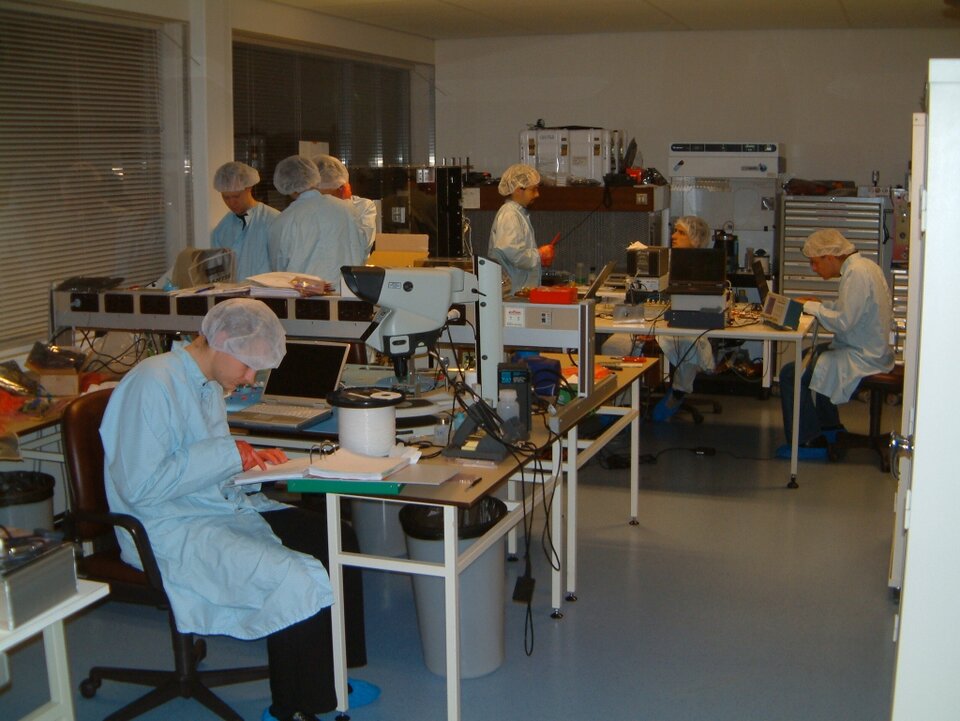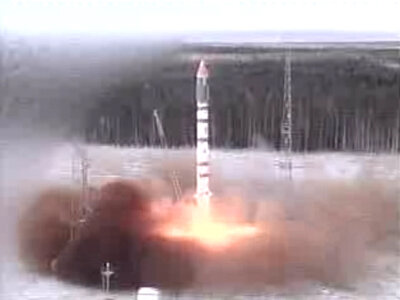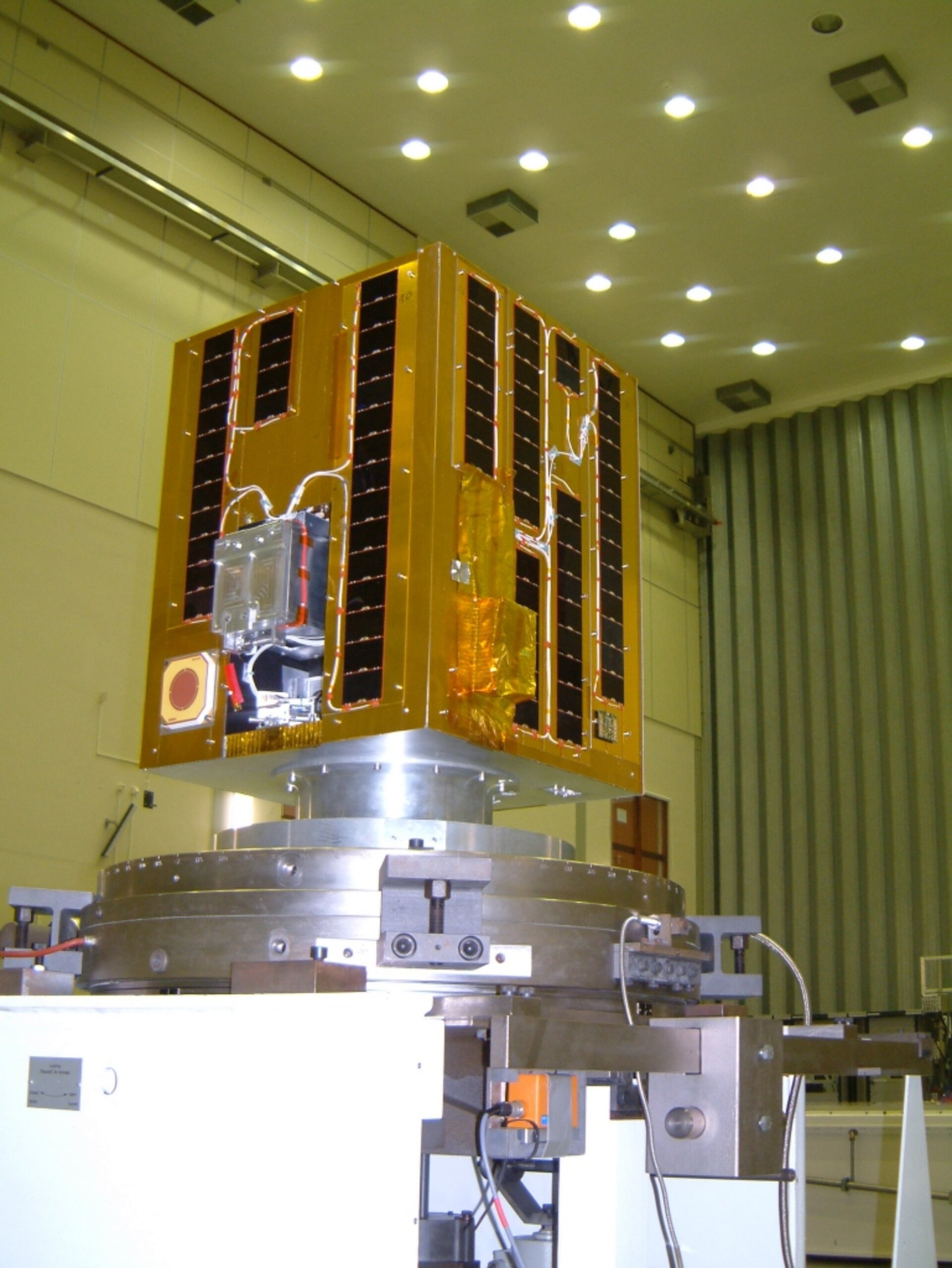SSETI Express nominated for 'Space Oscar'
The European Space Agency (ESA) sponsored student satellite, SSETI Express, is in the running for one of the Sir Arthur Clarke Awards (The UK Space Awards), often termed the ‘space oscars’.
The SSETI teams of university students and radio amateurs throughout Europe have been nominated in the category Best Student Achievement, “for designing, building and having launched a student satellite.”
The winners in each category will be announced on Saturday 8 April, at a gala dinner which marks the end of the eighth British Rocketry Oral History Programme (BROHP) meeting at Charterhouse School, near Godalming, Surrey, UK.
"I am delighted to hear that the SSETI community has been nominated for this prestigious award,” said Neil Melville, ESA Project Manager and System Engineer for SSETI Express.
“It is a well-deserved honour in recognition of the remarkable enthusiasm and dedication displayed by all the students involved. I am proud of the strong involvement of ESA in this unique project, and will continue to work with SSETI towards the success of its future projects.”
"This nomination represents a lot to me and to the association because it shows that the true value of all we have achieved is recognised by the scientific community,” said Mathieu Bolland, President of the SSETI Association.
“Thanks to the hard work of our members, the ESA Education Department and our partners, this dream has come true. I hope it will provide the fresh wind of motivation amongst the association necessary for the pursuit of our adventure to the Moon.”
A presentation on the SSETI Student Satellite Project will also be given during the BROHP conference, on Friday 7 April, by UK representative Oliver Finn.
The talk will give a brief overview of the SSETI project, specifically detailing the launch of SSETI Express, as well as the role of the Assembly Integration and Verification team in the next SSETI mission (SSETI ESEO) and the future goals of the project.
SSETI

The Student Space Exploration and Technology Initiative (SSETI) was created by ESA’s Education Department in 2000. In October of that year, students from 21 European universities were brought together via the internet to discuss how to turn their dream of building and launching a satellite into reality. Since then, it has grown to encompass hundreds of students across Europe.
The SSETI aims to increase the number of European students working in the fields of space technology and science by giving them practical, hands-on experience of working on space missions. The intention is to ensure that Europe has a well-trained, enthusiastic, work force that is ready to meet the technological challenges of the next 30 years.
ESA’s role is to provide managerial and technical coordination. It helps bring students together; provides facilities for meetings, verification and testing; and offers expert guidance from its technical staff. However, the end-product is the creation of the students. Working in teams across Europe they are responsible for the concept, design, development, construction, launch and operation of the spacecraft and payloads.
SSETI Express

SSETI Express, sponsored by ESA’s Education Department, was the first pan-European student microsatellite to be launched under the SSETI programme.
One of the major challenges of the project was to create an efficient team from the 23 groups of university students from many countries who worked together via the internet to design and build the satellite, overcoming distance and differences in cultural background.
The small spacecraft, similar in size and shape to a washing machine (approx. 60 x 60 x 90 cm), weighed about 62 kg and carried a payload of 24 kg. On board the student-built spacecraft were three extremely small pico-satellites, each weighing around one kg. These were deployed one hour and 40 minutes after launch.
In addition to acting as a test bed for many designs, including a cold-gas attitude control system, SSETI Express was intended to take pictures of the Earth and function as a radio transponder.
The spacecraft was launched on a Cosmos 3M rocket from Plesetsk, Russia, on 27 October 2005. The launch itself was successful but, unfortunately, the mission only lasted 12.5 hours as the solar array was unable to charge the batteries, due to a malfunction in the Electrical Power Subsystem.
Nevertheless, in many respects SSETI Express was a great success and many valuable lessons were learned. Of the 19 subsystems, 12 operated successfully, 5 could not be tested because the mission ended prematurely, and only 2 failed (one of them with no consequence as there was a backup). The media impact was enormous, with an estimated 100 million TV viewers.
Future SSETI missions

The SSETI is already looking to the future with two more satellite projects under way. Next in line is the European Student Earth Orbiter (ESEO), an Earth observation and technology demonstrator which is being developed by 300 students across Europe. Launch is currently scheduled for 2008.
There will also shortly be a feasibility study for a European Student Moon Orbiter (ESMO), with a possible launch around 2011.
ESA SSETI Contact Address:
SSETI Headquarters
ESA - ESTEC (EXR-E)
Postbus 299
2200 AG Noordwijk
The Netherlands
Tel: +31 71 565 6367
Email: Neil.Melville@esa.int




